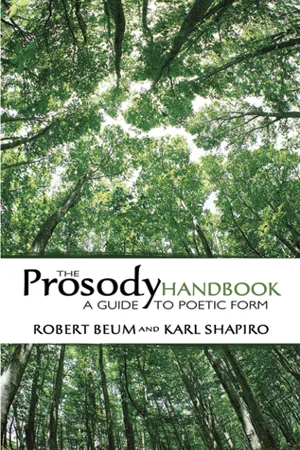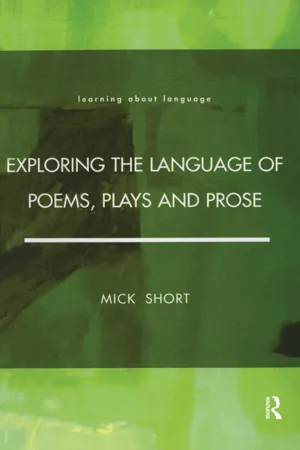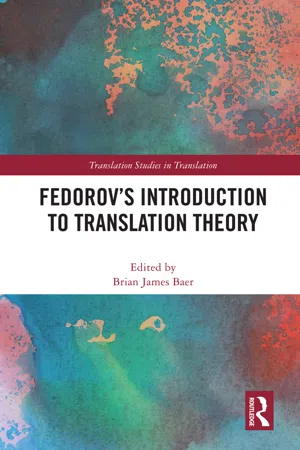Feminine Rhyme
Feminine rhyme is a type of rhyme where two syllables are rhymed, with the stress falling on the second-to-last syllable in each word. This type of rhyme is often associated with a more delicate or "feminine" sound, and is commonly used in poetry. Examples of feminine rhyme include words like "butter" and "clutter," where the final syllables "er" and "er" rhyme.
3 Key excerpts on "Feminine Rhyme"
- eBook - ePub
The Prosody Handbook
A Guide to Poetic Form
- Robert Beum, Karl Shapiro(Authors)
- 2012(Publication Date)
- Dover Publications(Publisher)
...11 The Uses of Rhyme I. RHYME AND ATTENTION When things work out as they should, a work of art—be it a poem, a play, a picture, a sonata—elicits our complete attention. In fact, this condition of “wrapt attention,” as Eliseo Vivas has termed it, is one of the essential characteristics of all aesthetic experience. We are held. Rhyme, at the same time that it is performing various other functions, helps rivet our attention. A pattern of parallels in sound color is set up, and as we move through the poem, whether in reading or in listening, our expectation is continually being raised and then satisfied. Ideally, rhyme helps pull us through and pull us in deeper, as we anticipate the scheme. This principle holds true even in the case of a highly irregular arrangement of the rhyme words: we still feel ahead, expecting the sound colors to find their mates somewhere. Meter, refrains, and all other parallel or repeated elements work to the same advantage. If the rhyme words are also completely effective—completely flawless in terms of meaning, logically and imaginatively right—then they are also integral parts of the poem’s vitality, and not simply a mechanical convenience; they are not then ornaments, but part of the very tissue. II. MUSICAL QUALITY Rhyme creates an effect which is pleasing and satisfying and which, by analogy, is traditionally referred to as musical or melodic quality. Euphonious rhymes (e.g., full–wool) are undoubtedly felt as more melodic than others, but since a certain pleasure comes about as a result of the mere fact of agreement, even words of harsh quality (scratch-batch) seem to lose some of their harshness in the pleasure that comes about when they are rhymed. Rhyme is thus a source of acoustic pleasure, and this pleasure will exist in any rhyming poem, independently of anything else in it. This pleasure, the tone or emotional coloring created by rhyme, may be described if not very accurately defined by words such as charm, sweetness, and harmony...
- eBook - ePub
- Mick Short(Author)
- 2018(Publication Date)
- Routledge(Publisher)
...The rhythm of languages like French and Arabic, for example, are said to be syllable timed, because their speakers perceive each syllable, not the interval between each strong stress, to take a roughly equal time. It is also worth remembering that 'equal time' between strong stresses in English is not a precise concept when measured in microseconds. The phenomenon of rhythmic timing appears to have as much to do with our perceptions as with measured equality in micro—time. 2. Phonetic and rhythmical patterning is sometimes put to good use by prose writers, however. See, for example, Leech and Short's discussion (1981: 89, 95) of passages from Conrad's 'The Secret Sharer' and Lawrence's 'Odour of Chrysanthemums'. 3. The terminological distinction between prose rhythm and metre derives from Fowler (1966b). 4. An open syllable is one which ends with a vowel. A closed syllable ends with a consonant. In sound-symbolic terms, where relevant, closed syllables will be appropriate to heavier, definite, things, and open syllables to the less lighter and less definite. 5. See Abercrombie (1965 and 1971). 6. See Leech (1969: 118-19). Knowles (1987: 135-9) refers to the same kind of verse structure as 'binary verse'. 7 Sinclair has developed the related notions of arrest, release and extension in a series of three articles, Sinclair (1966, 1968 and 1972). 8. See Sinclair (1972). For more general discussions of loose and tight styles, see Hendricks (1976: Ch. 5)....
- eBook - ePub
- Brian James Baer, Brian James Baer(Authors)
- 2021(Publication Date)
- Routledge(Publisher)
...Appendix: Basic concepts associated with the translation of poetry A.1 The features of poetry Poetry, as opposed to prose, is a special system of speech that is formally characterized by sound ordering and the generally consistent, or rhythmic, alternation of speech units. The specific features of poetry in a given language are organically woven into the features of the sound structure of that language. This sound structure is what determines the character of the elements that make up the basis of rhythm, that are the sound units of a poem’s rhythmic structure. A sound unit can be a stressed or unstressed syllable, a long or short syllable, a cluster of syllables (for example, a metric foot that includes the combination of a stressed syllable with one or more unstressed syllables), a consistent number of syllables (as in syllabic verse), or a consistent number of stressed syllables (as in tonic or accented verse). In verse, words are arranged in rhythmic lines that often connect with the help of rhyme. Within each of these rhythmic rows there can also be various forms of correlation between individual sounds—the accumulation of sounds that are similar to one another, the repetition of entire sound combinations or, alternatively, the contrast of sounds that are very different from one another. However, rhythm in a poem does not exist independently, and neither do words: words and rhythm work in tandem—they are inseparable. Form and content are united and overlap. Rhythm is inseparable from the semantic qualities of words, which in poetry acquire new shades of meaning, new semantic possibilities they do not have in prose, and a particular emotional effect. The arrangement of words in a poetic phrase, or the word order, also often differs from the language of prose. Poetry is also defined by certain word choices...


